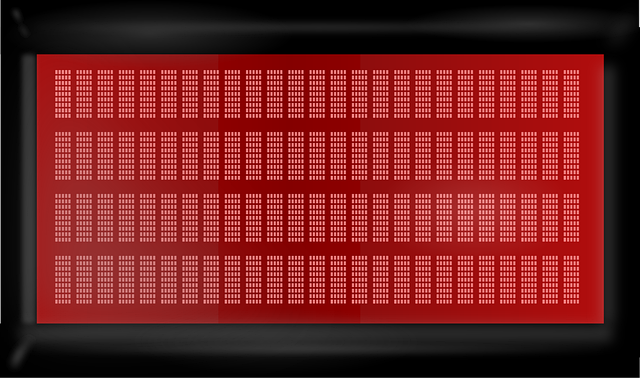Radiator chemicals and regular bleeding services are crucial for vehicle cooling system efficiency. Choosing the right antifreeze, based on car make and model, prevents air bubbles and impurities that hinder heat transfer. DIY or professional bleeding involves tools, protective gear, and specific instructions. Regular maintenance, inspections, and quick action extend radiator lifespan and prevent costly repairs.
Selecting the appropriate radiator chemicals is a critical step in maintaining your vehicle’s cooling system. This guide will walk you through the process, from understanding the basics of radiator chemicals to choosing the right antifreeze and factors to consider during purchase. We’ll also provide a step-by-step guide for safe mixing and essential maintenance tips to ensure longevity and efficiency. Remember, a well-maintained cooling system is key to preventing costly repairs, especially when it comes to crucial services like radiator bleeding.
- Understanding Radiator Chemicals: The Basics
- Purpose of Radiator Bleeding Service
- Choosing the Right Antifreeze Type
- Factors to Consider When Buying Chemicals
- Step-by-Step Guide for Safe Mixing
- Maintenance Tips for Longevity and Efficiency
Understanding Radiator Chemicals: The Basics

Radiator chemicals play a crucial role in maintaining the efficiency and performance of your vehicle’s cooling system. Understanding the basics is essential for anyone looking to undertake a radiator bleeding service, especially when it comes to fixing old radiators or addressing air bubbles. The primary components include antifreeze (or coolants) and additives that help prevent corrosion, maintain fluid levels, and ensure optimal heat transfer within the radiator.
When you opt for a reputable plumber in Bromsgrove for your radiator maintenance needs, they’ll often recommend specific chemicals based on your vehicle’s make and model. The process involves carefully bleeding air out of the system to replace it with fresh antifreeze, which is a vital step in keeping your engine cool under various driving conditions. By regularly servicing your radiator and using the correct chemicals, you can ensure your vehicle stays reliable and performs at its best throughout the year.
Purpose of Radiator Bleeding Service

The purpose of a radiator bleeding service is to remove any air bubbles or impurities from your car’s cooling system, ensuring optimal performance. Over time, air can enter the radiator through small leaks or during regular maintenance, leading to reduced efficiency in heat transfer. The process involves carefully and systematically releasing this trapped air, which can cause problems like hot spots, decreased coolant circulation, and even damage to vital components. A professional radiator bleeding service is crucial for fixing radiator air bubbles, repairing radiator pressure caps, and ensuring your vehicle’s engine stays cool under stress. By maintaining a clean and efficient cooling system, you also help prevent unexpected repairs and keep your car running smoothly.
Regular maintenance, including a thorough radiator bleeding service, plays a vital role in extending the life of your radiator and overall cooling system. Many car owners overlook this essential service, often waiting until they notice symptoms like excessive heating or unusual noises. However, scheduling a periodic radiator bleeding can provide a cost-effective repair solution before more serious issues arise. Obtaining a radiator repair cost estimate from a trusted mechanic will help you stay informed about potential expenses and make informed decisions regarding your vehicle’s maintenance.
Choosing the Right Antifreeze Type

Choosing the right antifreeze type is a crucial step in maintaining your vehicle’s radiator and overall cooling system health. The primary function of antifreeze is to prevent freezing in cold temperatures and overheating in hot climates, but not all radiators require or benefit from the same type. Traditional antifreeze, usually based on ethylene glycol, is suitable for most cars, offering good freezing protection down to -30°C. However, if your vehicle operates in extreme heat or has specific cooling system requirements, you might need a high-performance antifreeze with enhanced boiling points and corrosion resistance. Some modern vehicles even come with a manufacturer-recommended specialist antifreeze blend designed for optimal performance.
When considering a radiator bleeding service (or learning the home radiator bleeding guide), understanding your vehicle’s needs is key. A professional auto radiator service near me can advise on the ideal antifreeze type, ensuring it complements your car’s existing cooling system design and driving conditions. This step-by-step process involves replacing the old antifreeze with fresh, new fluid to improve efficiency and prevent damage from outdated or contaminated coolant.
Factors to Consider When Buying Chemicals

When considering which chemicals to purchase for your radiator bleeding service, several key factors come into play. Firstly, ensure that the products are suitable for your specific radiator type and model. Different radiators may require unique blends or formulations to achieve optimal performance during the bleeding process. This includes checking if the chemicals are compatible with your system’s material composition.
Additionally, consider the environmental impact and safety aspects of the chemicals. Opt for eco-friendly options where possible and choose products that align with industry standards for safety. The radiator bleeding tools needed should also be taken into account; some chemical kits come with comprehensive sets, while others may require you to source additional equipment like bleeder screws or valves, ensuring a complete and efficient boiler repair process.
Step-by-Step Guide for Safe Mixing

When undertaking a DIY radiator recirculation or considering a radiator bleeding service, safety should always be your top priority. Mixing the right chemicals for your radiator system is a delicate process that requires careful consideration to avoid damage and ensure optimal performance. Here’s a step-by-step guide to help you navigate this process safely:
1. Identify Your Radiator Type: Different radiators may require specific chemical compositions. Check your vehicle’s manual or consult a professional mechanic to confirm the type of radiator you have, be it aluminum, copper, or steel. This initial step is crucial as different materials necessitate diverse treatment methods and fluids.
2. Gather Necessary Tools and Chemicals: For a successful radiator bleeding and top-up, source the appropriate tools like a bleeder kit, new radiator fluid (preferably recommended by the manufacturer), and protective gear including gloves and eye wear. Always opt for high-quality chemicals suitable for your vehicle’s system to prevent corrosion and ensure longevity.
3. Follow Manufacturer Instructions: Refer to your car’s manual or consult an expert for the correct fluid mixture ratios. Mixing incompatible fluids can lead to dangerous reactions, so understanding the recommended specifications is paramount.
4. Bleed the Radiator System: Begin the bleeding process by removing the radiator cap and opening a bleeder valve while running the engine at low speed. This step helps flush out old or contaminated fluid and air bubbles. Ensure all valves are tightly closed after bleeding to prevent leaks.
5. Carefully Mix New Fluid (if required): If topping up, mix new fluid with care, following the manufacturer’s guidelines for the correct ratio. Never overfill; allow space for thermal expansion. Close the radiator cap securely after filling.
Maintenance Tips for Longevity and Efficiency

Proper maintenance is key to ensuring your radiator remains efficient and lasts for years to come. Regularly checking and topping up coolant levels is an essential first step. It’s important to note that most modern vehicles use a closed-loop system, which reduces the need for frequent radiator bleeding services. However, if you notice any signs of leakage or low coolant, it’s crucial to address these issues promptly to prevent further damage.
One common issue that requires attention is a leaky radiator. If left unattended, small leaks can lead to significant fluid loss and reduced performance. Regular visual inspections can help identify such problems early on. Additionally, keeping an eye on the radiator repair cost estimate can be beneficial. While some repairs, like replacing coolant in the radiator, might be straightforward and affordable, others could incur higher costs. Timely maintenance and quick action when issues arise are vital to maintaining optimal radiator health and efficiency.
When it comes to maintaining your vehicle’s radiator system, selecting the ideal chemicals is key. By understanding the fundamentals of radiator chemicals, their purposes, and the factors to consider during purchase, you can ensure optimal performance and longevity. Remember, a well-chosen radiator bleeding service and antifreeze type are essential for efficient cooling and preventing damage. Follow the step-by-step mixing guide and maintenance tips provided to keep your vehicle running smoothly and safely.
